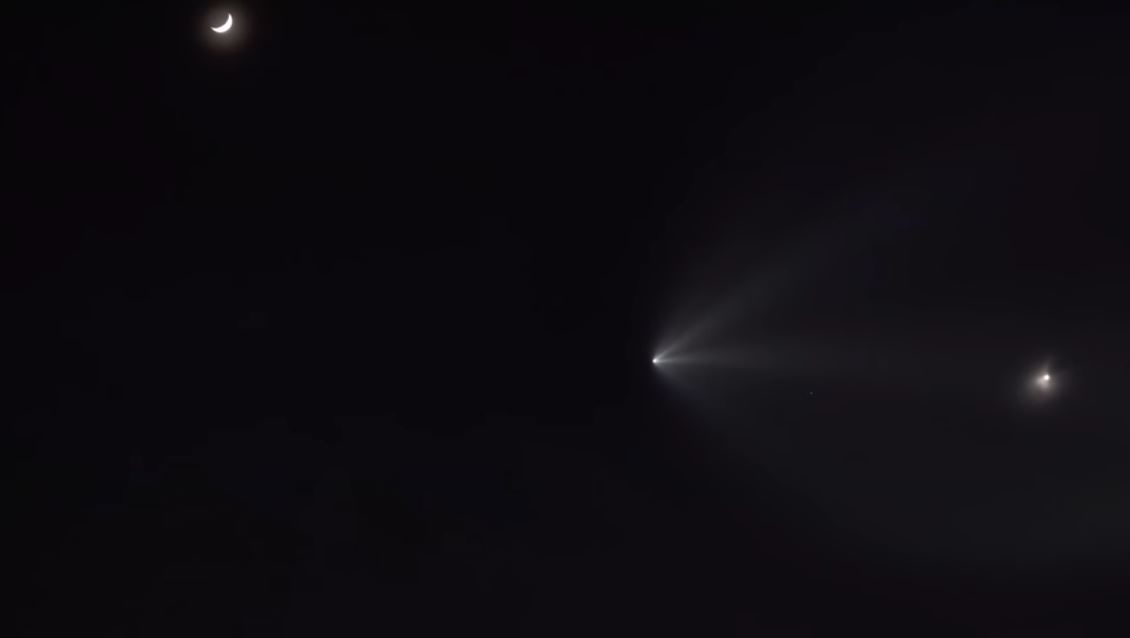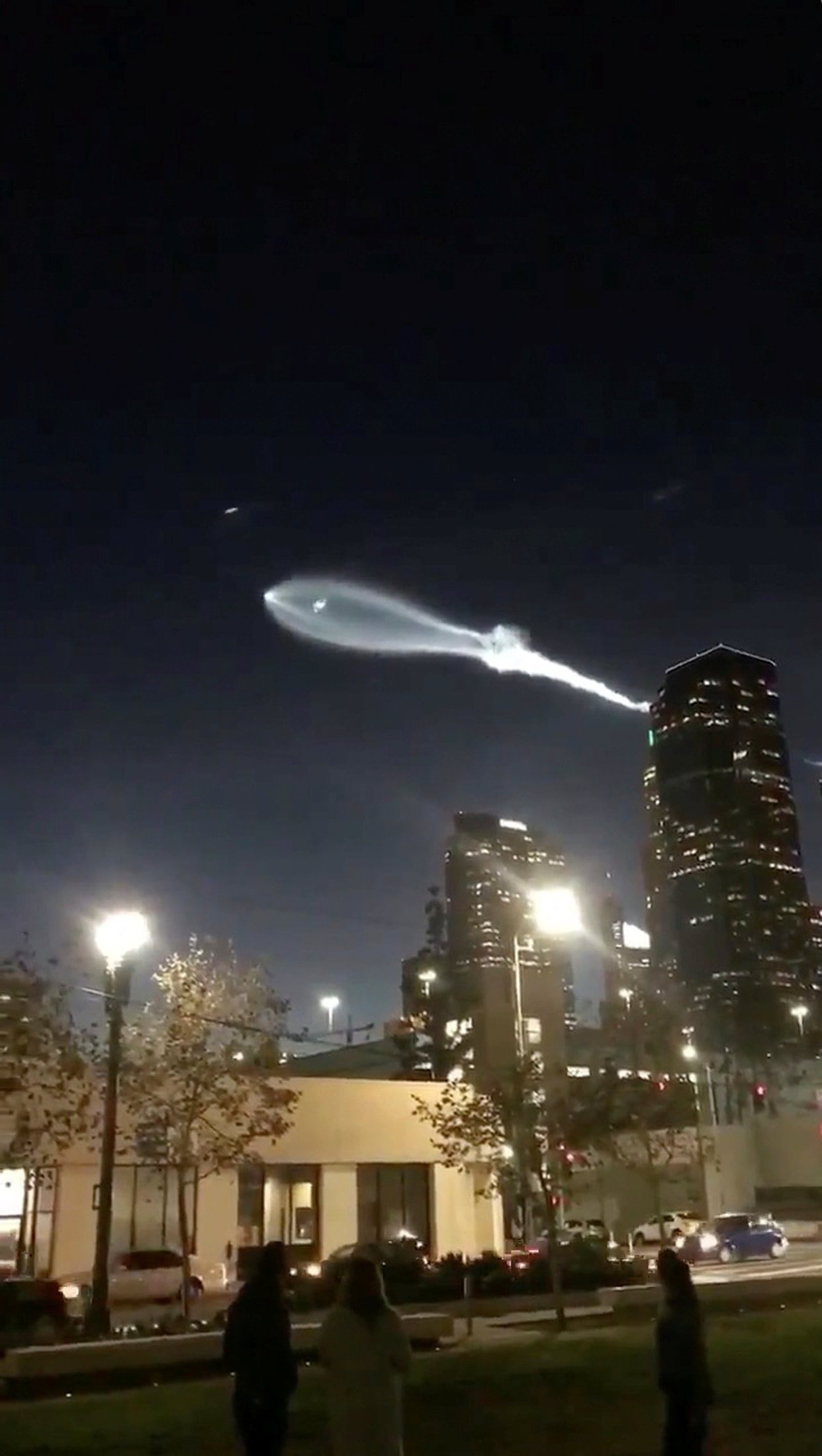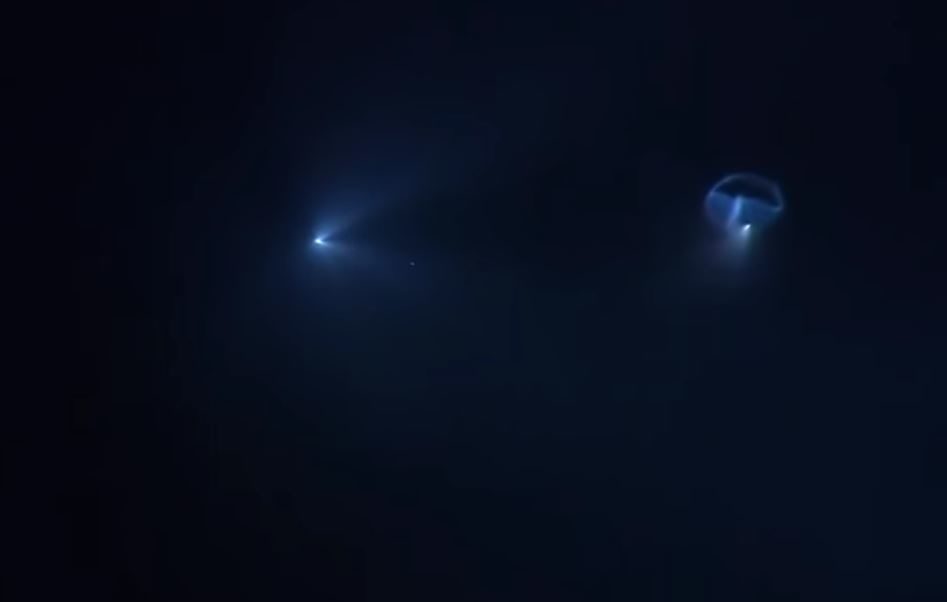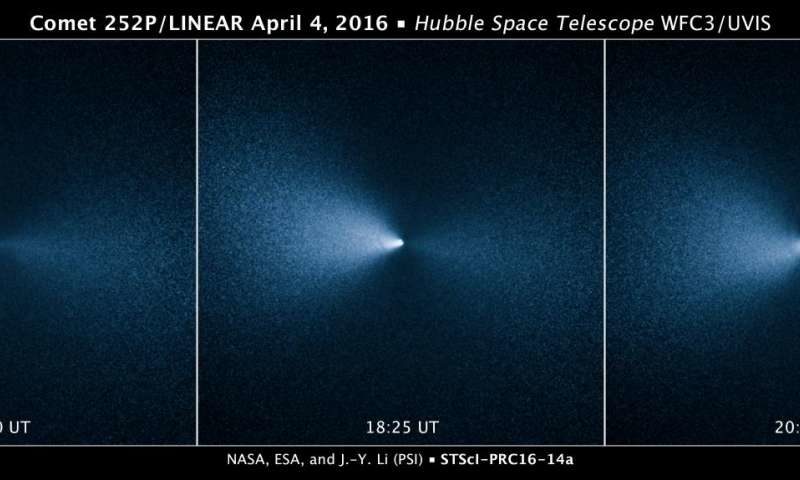
Spectacular footage of a glowing, billowing streak was widely seen throughout southern California and as far away as Phoenix, Arizona. Calls came in to TV stations and emergency services as far afield as San Diego, more than 200 miles south of the launch site, as people were spooked about what caused the strange sight.
Here's the event as seen from Anaheim, Los Angeles, 160 miles southeast of Vandenberg:
The view from Phoenix, Arizona, which is 500 miles east-southeast of Vandenberg, was equally spectacular. Note that the reporter in the chopper was in the air to cover a traffic accident, not the SpaceX launch:
In this last video we want to show you, reporter Jeff Platt for KBAK-KBFX Eyewitness News was actually covering the SpaceX launch, providing commentary on the event from lift-off to space from his vantage point in Bakersfield, California, which is 95 miles northeast of Vandenberg. Platt is reduced to saying, once the trail fans out into 'maximum-spectacular' mode, "At this point I really couldn't tell what exactly is happening [pause]... space travel isn't exactly my line of expertise."
Back-lit by the sun?
Most media talking heads, however, did elect to explain the spectacular trail, claiming that it was a result of the sun 'back-lighting' the trail as the rocket reached higher into the atmosphere. It's a plausible theory, but it doesn't explain what happened. To begin with, if that's what this was, then it would happen every time a rocket is launched into space on a clear evening or night. But it doesn't.
If it was simply a matter of the sun hitting the trail, then the 'glowing effect' would, once it begins, remain constant. Instead, we observe that it starts, stops, then starts up again. Additionally, the sun doesn't usually 'light up' exhaust, not even exhaust laden with spent rocket fuel. A key factor making both the rocket and the trail so brightly illuminated is their electric charge differential relative to the surrounding space. In short, the illumination is a plasma effect, and latter stages of this footage shows not the trail, which would become smaller to the eye as the rocket travels further from the planet's surface, but a far-larger plasma tail.
Again we note that this doesn't happen every time a rocket is launched into space, but it does appear to be happening more and more often. There have been other rocket launches (a couple of which were possibly cometary events passed off as 'rocket launches') in recent times that produced weird and unexpected displays. Check out this event - apparently showing a Glonass-K1 rocket launch in northern Russia - from February 2011. Or this monster trail from California in August 2009. Or this spiral display filmed from southern Russia in December 2009, around the time of that 'blue spiral' event seen from Norway. And here's another ghostly apparition filmed from different angles over Kazakhstan in January 2011.

YouTubers commenting that the SpaceX rocket launch "looked like a freaking comet" were not far off the mark. As we've theorized in Earth Changes and the Human Cosmic Connection, the atmosphere has become more electrically charged these days as it accumulates increased levels of comet dust (more generally termed 'meteor smoke') and volcanic dust. The atmospheric dust captures electrons that circulate from the (relatively) negatively-charged Earth to the positively-charged ionosphere, creating atmospheric regions with varying electric potential.
The atmosphere is not one homogeneous space - its electric potential varies according to elevation (as a general rule; the higher, the more positive) and to dust concentration (negatively-charged regions). The combustion particles in the rocket trail become electrically-charged (ionized) and when the electric potential difference between the ionized combustion particles and the surrounding space is sufficiently high, it glows.
This might account for what we saw in the recent launch footage: the 'glowing plasma' effect starts, then abruptly stops, then restarts as the rocket pierces different regions of the atmosphere. Once it restarts, it then produces discrete patterns as it moves through additional regions. The detached boosters are seen doing their own thing, while the remaining rocket and payload hit the upper atmosphere and the trail fans out with visible 'plasma jets' - which are more typically seen on comets:





Reader Comments
Such prominent exhaust displays usually don't happen when the sun is on the opposite side of the earth relative to the launch site (in the middle of the night). In such cases, the Earth's shadow extends (approximately as a cylinder) pretty much vertically above the launch site, and the rocket doesn't leave Earth's shadow while the exhaust is generated.
I think that the exhaust undergoes such dramatic qualitative changes (turbulent, smooth) because of the layers of the atmosphere. The last stage always exhibits a very smooth display, and that seems to be at the point when the rocket leaves the last atmosphere layer and enters high vacuum. Vacuum doesn't resist the expansion of the exhaust plume, an so it can grow very large compared to the earlier stages.
But I do agree that the exhaust is in a plasma-like state and can be influenced by the electrical and magnetic environment.
A day after publishing the above, this happens... [Link]
Austria: Strange funnel-shaped luminescent cloud visible for 15 minutes in night sky
This light display appeared between 04:30h and 4:45 h on Tuesday morning 12-26-2017, over the Soboth in South-west Steiermark province Austria, the view in towards the East. Gerald Reczek reported......which is similar to the following from 2013:
[Link]